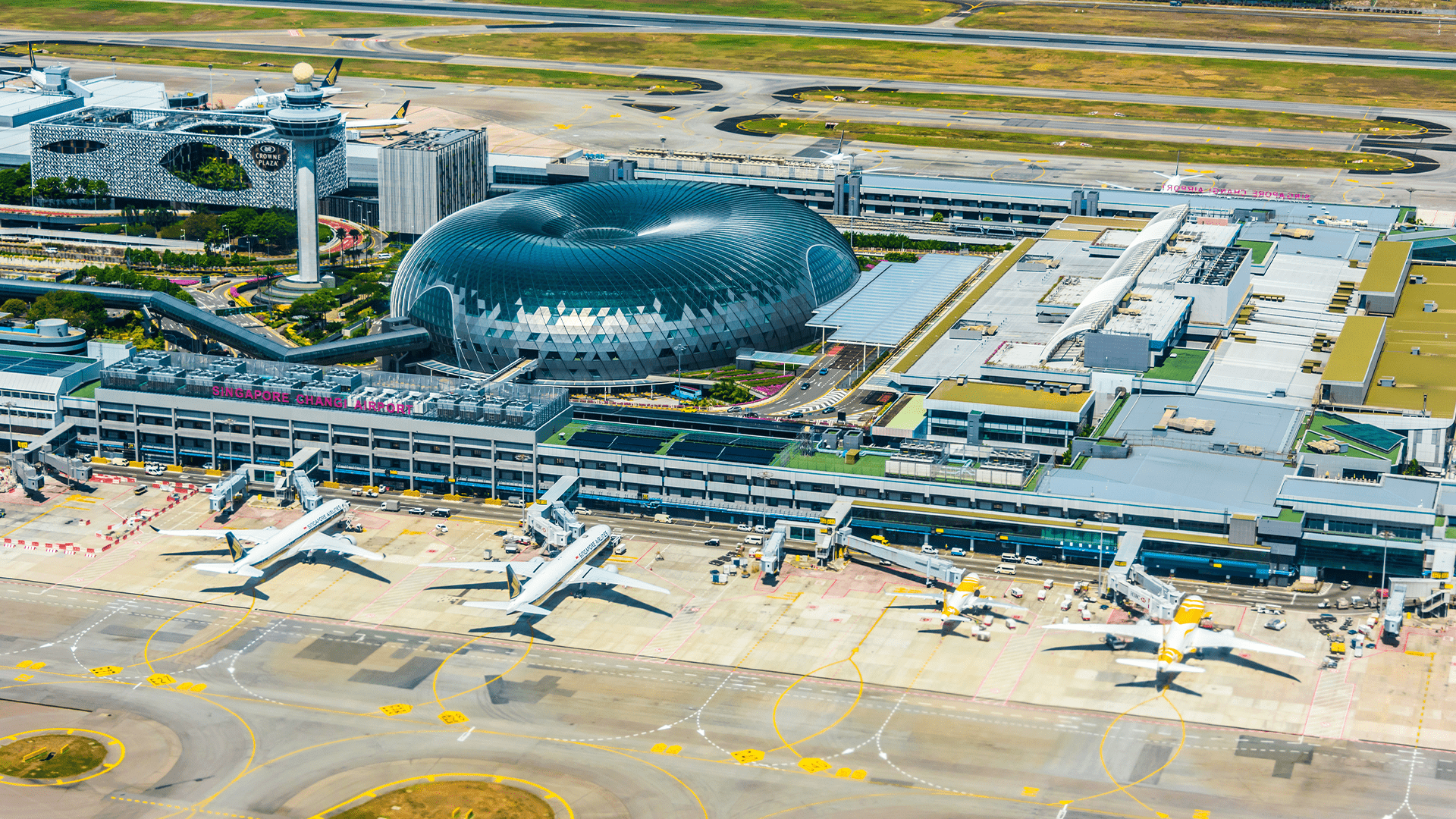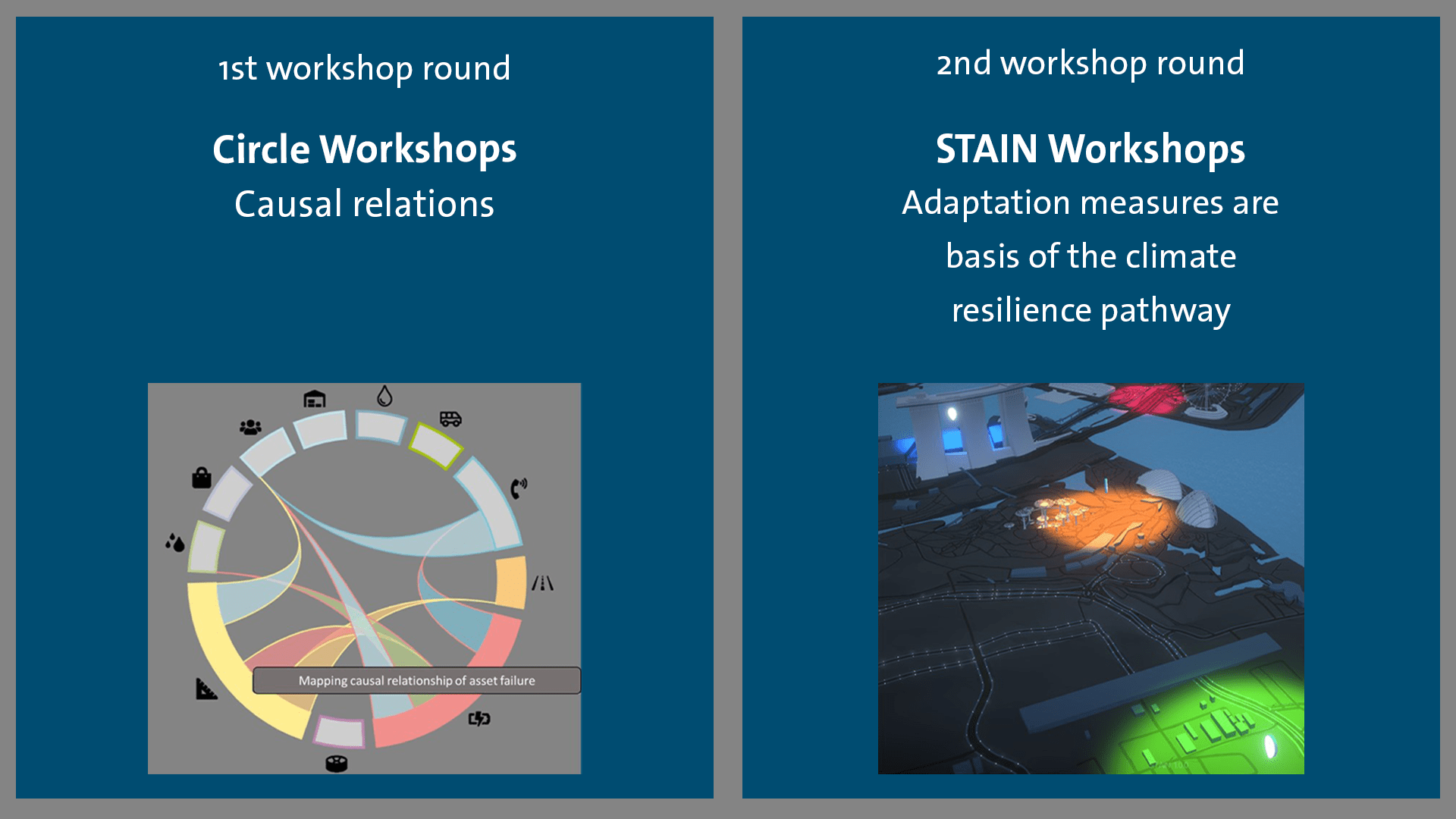Traversing complexity to strengthen climate resilience at Changi Airport

Project facts
- ClientChangi Airport Group
- LocationChangi, Singapore
- PeriodNovember 2020 – March 2022
- ChallengeHow can Changi Airport maintain business continuity in the context of climate change?
- SolutionClimate stressors & scenario analysis, assessment of climate risks on assets & operations and development of measures.
The challenge
Navigating Changi Airport's climate resilience journey - a pathway to 2050
Changi Airport is a vital part of Singapore’s transport system and one of the biggest airports in Asia. To ensure Changi Airport’s world-class operation can continue to run safely and efficiently, climate resilience is crucial. In light of escalating climate impacts, Changi Airport Group entrusted NACO with the task of providing expert guidance to determine the potential risks to their airport infrastructure and operations, and recommendations on how to keep Changi Airport operating smoothly even as the climate changes.
The solution
Climate adaptation and resilience planning and collaborating for success
First, we carried out climate scenario modelling to explore how the climate might change in the area where the airport is located. We combined operational data with weather information received from Meteorological Service Singapore and the Centre for Climate Research Singapore to get a clear picture of potential operational problems the airport might face in the future due to climate change.
Next, we engaged stakeholders in Changi Airport's climate resilience journey through workshops to map climate risks. Together with airport stakeholders, we mapped the potential impact of a disruptive event and drew connections on how a single disruption can impact multiple assets and operations. We used our digital tool STAIN, to visualise these cascading effects and highlight the interconnected nature of airport operations.
Following the identification of key risks and again working closely with the airport’s stakeholders, we developed measures to reduce these risks and increase airport resilience, covering everything from infrastructure to procedures and guidelines.

NACO demonstrated their expertise in the wide range of disciplines needed in building an airport’s resilience to climate change. Their strategic and collaborative approach empowered our stakeholders to take ownership of the decision-making with practical measures for the near and long-term.
The result
A clear path forward for Changi Airport's climate resilience journey
The result of this process was a Climate Adaptation Pathway, detailing how Changi Airport can become more resilient to climate change and potential risks in terms of sea level rise, erratic wind patterns and rainfall events, lighting strikes, extreme heat stress, reduced visibility and wildlife. The pathway lays out what steps the airport can take today, in 2030 – and what can be achieved by 2050. By implementing the recommendations in this plan, Changi Airport can continue to be a safe, efficient, and world-class transportation hub and gateway to Asia for years to come.
Moreover, our collaborative approach, actively engaging Changi Airport’s stakeholders, increased the understanding of interrelations of different parts and departments of airports and fostered a stronger sense of collaboration within the airport community.
We’re delighted to put Changi Airport on the path to greater climate resilience. Our extensive adaptation roadmap enables the airport to continue its climate resilience journey as Singapore’s first-in-class aviation hub.
